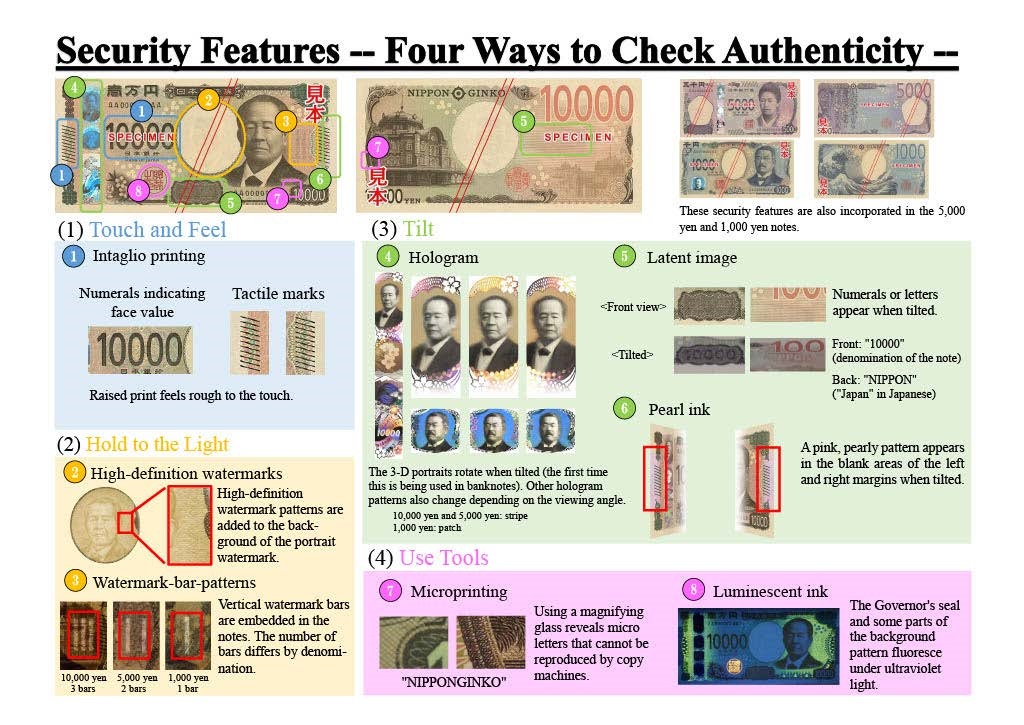



Back in September 2021, Holography News® reported that printing had started of the newly designed 10,000 yen note which contained an intriguing moving portrait of Eiichi Shibusawa. Now, for the first time, The Bank of Japan (BoJ) has displayed the series of three new banknotes, and all of them contain a holographic portrait.
The new 10,000, 5,000 and 1,000 bills will be issued in the first half of fiscal 2024 and each of them will contain what appears to be a different holographic stereographic portrait. In addition to the 10,000 yen which displays Eiichi Shibusawa, known as the father of Japan’s capitalism, will be the 5,000 yen bill showing a portrait of Umeko Tsuda, a pioneer in women’s education who founded Tsuda University in Tokyo, and the 1,000 yen banknote featuring Shibasaburo Kitasato, a pioneer in serotherapy treatment of infectious diseases.
Each of the denominations has a similar design format, with enlarged numbers of the face value, improved tactile marks, a central portrait on the front and an emblematic Japanese design on the reverse.
Educational material from the BoJ claims that this is ‘the first time that a 3-D hologram has been used on a banknote’. The description of the holograms is more judicious on the public awareness campaign poster, which states that this is the first use of ‘3-D portraits on banknotes’.
The main colour of the 1,000 yen is blue with the design of ‘Kanagawa-oki nami ura’ (Under the Great Wave off Kanagawa) from the series Fugaku sanjūrokkei (Thirty-Six Views of Mount Fuji), a Japanese ukiyo-e woodblock print by Katsushika Hokusai.
It is interesting that the current version of the 1,000 yen note (equivalent to around $7.25) doesn’t carry a hologram – further confirming the increasing acceptance by central banks of the value of the hologram as an anti-counterfeiting device.
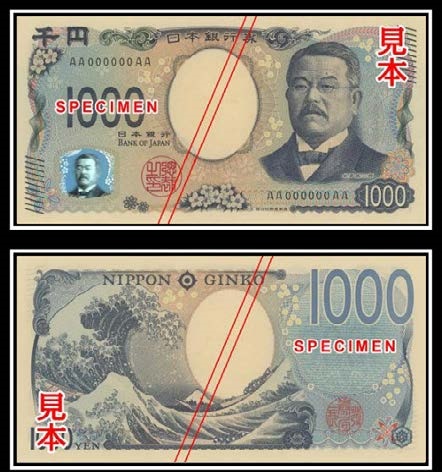

The main colour of the note is purple and the design concept is based around Japanese wisteria flowers. The holographic portrait is part of a larger holographic stripe.
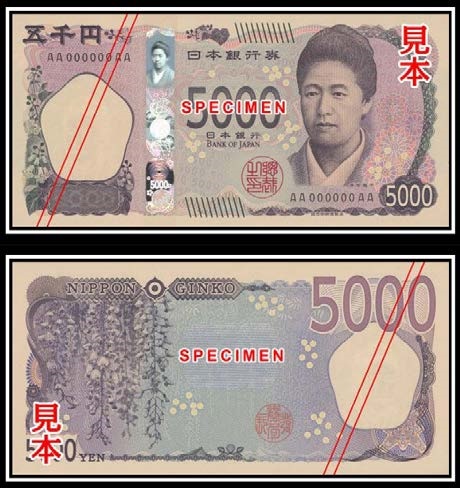
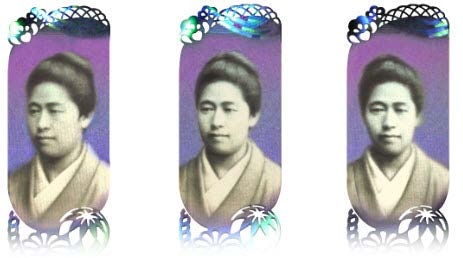
Holographic portrait from multiple viewing angles
(© Ministry of Finance).
The main colour of the note is brown and the design on the reverse is of the Tokyo Station Marunouchi Building.
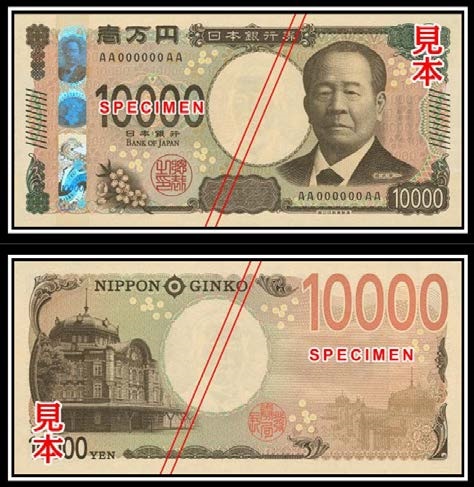
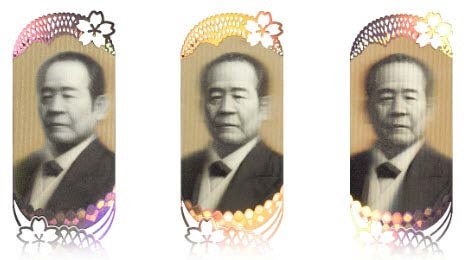
Holographic portrait from multiple viewing angles (© Ministry of Finance).
In advance of the issue of the new series of notes, the BoJ has launched a public awareness campaign to help ensure a successful transition to the new banknotes by familiarising users with the new currency and educating the public about its features.
The holographic portraits form an important element in the ways to check for authenticity of the notes, encouraging the public to tilt and rotate the note to witness the changes in perspective of the portraits and colour patterns in the surrounding graphics.
Several other optical features are highlighted in the campaign poster, including high-resolution watermarks, latent images and iridescent inks.
The HN article in September 2021 commented that the growth of polymer and hybrid substrates for banknotes offered some hope for improving the quality of reconstructing and viewing holographic portraits, which are notoriously susceptible to surface roughness.
Rough surfaces scatter light in different directions, causing the light rays to deviate from their intended paths. This scattering effect reduces the coherence of the light which is crucial for forming a high-quality holographic image. Additionally, diffraction occurs when light encounters irregularities on the sub-micron level on a surface, leading to distortions in the reconstructed wavefronts. Scattering and unwanted diffraction introduce noise to the reconstructed image and reduce the overall signal-to-noise ratio of the hologram.
The Japanese banknote has historically been made from paperbrush, pulp and other fibres giving it a unique colouring and texture. It will be interesting to see how the Shibusawa, Tsuda and Kitasato portraits fare on this unforgiving surface.
